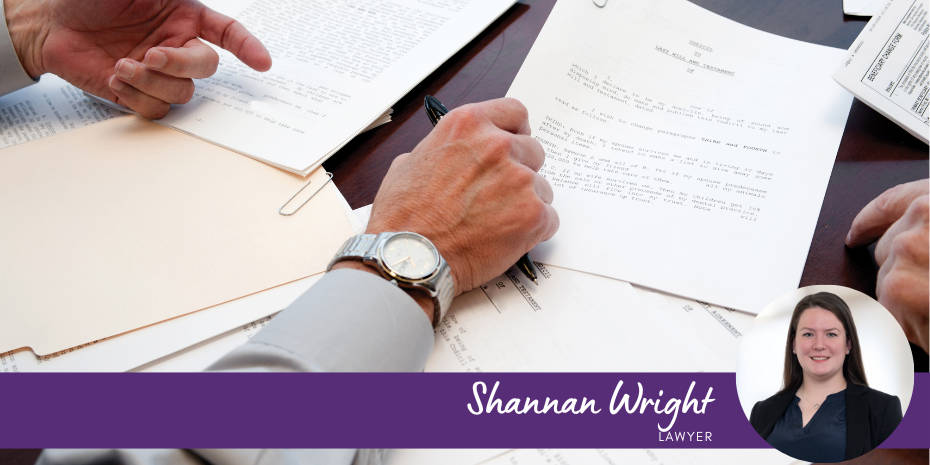KEY TAKE-OUTS
- Probate is the process where the original Will of a Deceased person is sent to the Court in order for the Court to authorise the appointed Executor(s) to carry on their duty to finalise the Estate.
- An Executor is a person who is appointed under the Will and is responsible for controlling and managing the Estate. The general duties include notifying all asset holders and creditors, filing an Application for a Grant of Probate, finalising all assets and paying the creditors, and lastly distributing the Estate in accordance with the Will.
- It is not always the case that a Grant of Probate for an Estate is required to be obtained, as it depends on the assets held by the Estate.
- The process for obtaining a Grant of Probate is very similar for every Estate, however, the length of time required for the entire duration of the process will depend on the size and nature of the Estate.
When someone passes away and leaves a Will, the Executor(s) appointed under the Will have a duty to control and manage the Estate. As part of the general tasks of an Executor, they are required to notify asset holders and creditors, prepare and file an Application for a Grant of Probate and distribute the Estate once the assets have been finalised and all creditors paid.
It is not always the case that an Executor is required to obtain a formal Grant of Probate from the Supreme Court of NSW, as it is dependent upon the size and nature of the Estate. The biggest contributing factor to determine the need for a Grant of Probate is the consideration of the assets of the Estate and the requirements of the asset holders in order to close or transfer the assets. Assets of an Estate include things such as real estate, bank accounts, superannuation, shares held in a company and motor vehicles.
Generally, an Executor will engage a Deceased Estate’s Lawyer to assist them with administering the Estate. Engaging a Deceased Estates Lawyer will ensure that the process is completed efficiently and effectively and that the wishes of the Deceased person are adequately met.
Alternatively, some Estates do not require a Grant of Probate to be obtained as not all asset holders require a Grant before finalising the accounts. Accordingly, if no asset holder of an Estate requires a Grant of Probate, the Estate’s lawyer is able to finalise the assets and distribute the Estate in accordance with the Will of the Deceased person.
The process to obtain a Grant of Probate is similar amongst most Estates, however, the length of time for the process will differ depending upon the size and nature of the Estate. As a general overview, the process for obtaining a Grant of Probate is as follows:
-
Notify all asset holders and creditors regarding the passing of the Deceased person.
- As the first step for all Deceased Estate matters, you need to prepare a list of all assets and liabilities in the name of the Deceased person.
- Once a list has been generated, it is important to make contact with each of them to notify of the passing of the Deceased person.
- This step is important because it is a way to determine the value of the Estate in order to accurately account for them in the Probate Application.
- If you are unaware of the assets of an Estate, it is best practice to write to the major banks, the Australian Taxation Office and conduct an asset search through InfoTrack to investigate the possible assets owned.
- If you are unaware of the liabilities of the Estate, it is suggested that a Notice of Intended Distribution of Estate is filed once the Grant of Probate has been obtained by the Court. This is because it will put the creditors on notice to contact the Estates Lawyer and make a claim.
- In this instance, it is appropriate to advise the Estate’s Lawyer of the entire overview of the assets and liabilities of the Estate. Once you have disclosed these assets and liabilities, it will be the Lawyers job to contact all assets holders to ascertain whether the asset holders need a Grant of Probate in order to release the funds, close the accounts or transfer the asset to a nominated beneficiary.
-
Prepare the Application for a Grant of Probate.
- Once you have received a response from all asset holders and creditors, you are now ready to complete the Application for a Grant of Probate.
- The Application should be filed with the Supreme Court of NSW no later than six (6) months from the date of death.
- As the final step, you will need to post the original Application for a Grant of Probate to the Supreme Court of NSW for filing.
- The turnaround time for the Court to review and file the Grant of Probate will depend on the Court’s capacity and generally, it is between 3-5 weeks for a standard Grant to be obtained.
-
Finalise the assets.
- Once you have the original Grant of Probate returned from the Court, the Executor is now authorised to finalise the assets and pay the liabilities of the Estate.
- Finalising the assets can be conducted in many ways which include closing accounts and transferring the funds into an Estate bank account, transfer the asset to a beneficiary or selling the assets.
-
Distribute the Estate.
- Once you have finalised the assets, you are ready to distribute the Estate.
- Distribution means you transfer tangible assets or transfer the monetary funds to the beneficiaries nominated in the Will.
- The distribution of the Estate should happen within 12 months from the date of death.
- The Executor may decide to publish a Notice of Intended Distribution of an Estate, which puts notice to all creditors that the Estate will be distributed in thirty (30) days.
- Distribution of an Estate means that the creditors are to be paid from the Estate funds and all assets are divided, whether they are cash assets or tangible assets.
As mentioned above, there is a standardised process when you need to obtain a Grant of Probate for an Estate, however, the complexity of the Estate may make the process lengthier. It is beneficial if you engage a Deceased Estates Lawyer to help with the process as they will endeavour to make the process more efficient and with no added stress to the family.
For further information please don’t hesitate to contact:
This blog is merely general and non-specific information on the subject matter and is not and should not be considered or relied on as legal advice. Coutts is not responsible for any cost, expense, loss or liability whatsoever to this blog, including all or any reliance on this blog or use or application of this blog by you.



